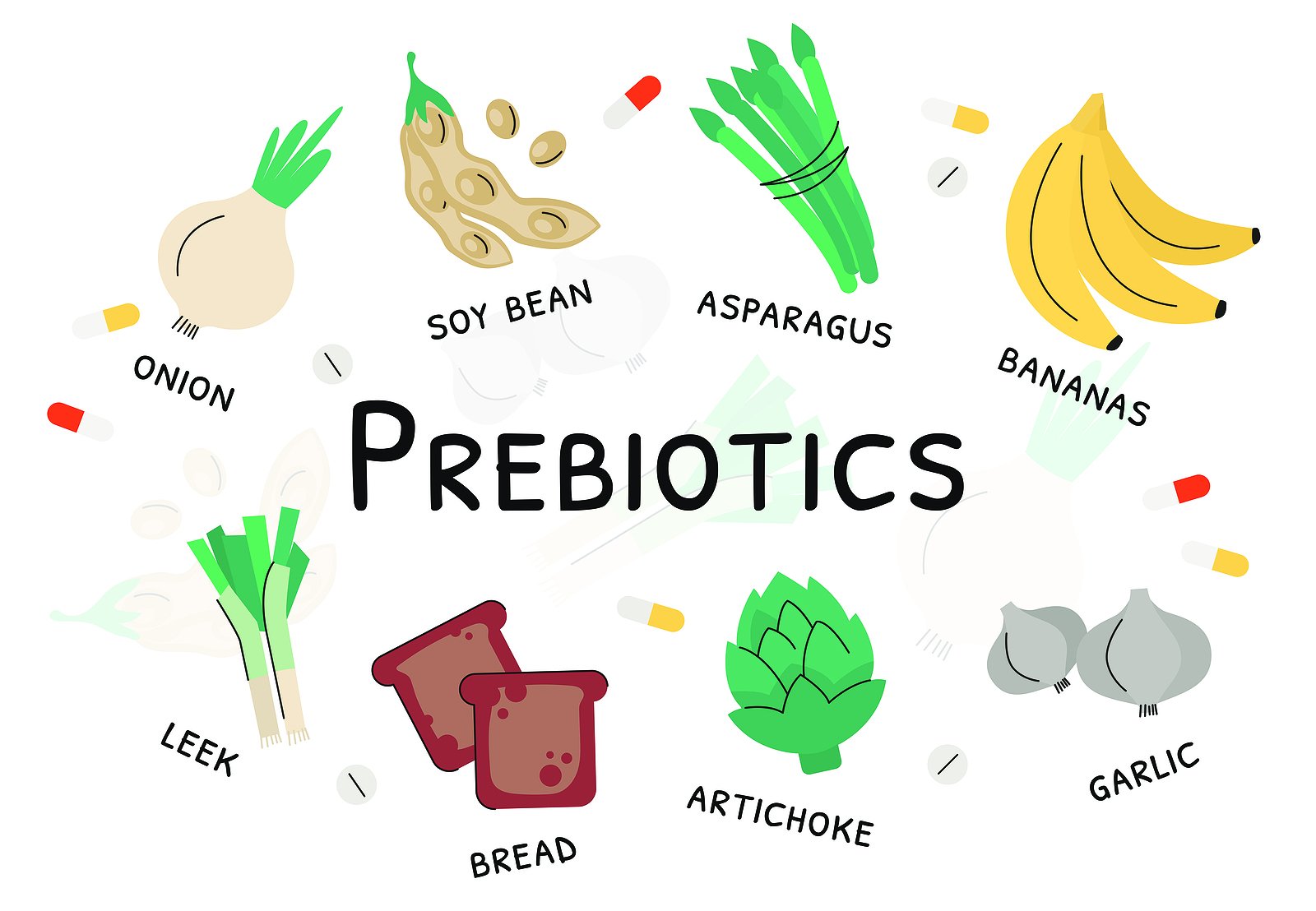
A blog by Mickayla Hosking (BHSc Naturopathy) from Rosemary Naturopathy.
Prebiotics and probiotics have been buzz words for the past couple of years, and as a naturopath, they are incredibly important in a lot of my client care. In this article I'll briefly discuss what each are, where you can find them, and their benefits. Soon you'll be a gut expert.
Probotics - probably the most booming industry right now, probiotics are live bacteria or yeasts that benefit your digestive system and gastrointestinal tract (Gut). They are tiny, like the bugs that get you sick, but specific families and strains of bacteria/yeasts actually contribute to your good health in big ways. Most people would have consumed probiotics in some form recently - whether this be in their morning yoghurt, kombucha, saurkraut, miso, kimchi, sourdough or cheese. These are all examples of traditional foods which use fermentation to change the texture or taste of foods. Probiotics support healthy colony size of beneficial bacteria. Research suggests you should eat at least one to three different sources of probiotics each day. You can try a new one each week! Just be aware that not all probiotics mesh with your current microbiome (the incredibly unique combination of bacteria that inhabit you). If you experience increased gas, bloating, or discomfort - this is a sign that this is not the probiotic for you and you may have more luck with prebiotics.
Prebiotics - these are the natural fibres found in fruit, vegetables and plants that feed your microbiome. Your microbiome break down and ferment those fibres which allows them to produce short-chain fatty acids (very important for a healthy intestinal lining) and some bacteria even produce necessary nutrients, such as Vitamin K and B12. The bacteria that make up your microbiome help you break down your food to get the most nutrition. The most notable families that benefit humans include Bifidobacterium and Lactobacillus generas. The strains and volume of these families are different in everyone, and can change depending on inflammation levels and largely - diet*. Since prebiotics are so various and easy to access, all you need to do is keep up your vegetable intake. The only catch being - you have to have variety. Variety is paramount to microbiome diversity and wellbeing. This is key as there are different types of prebiotics.
- *Fructans (FOS & inulin) - found in plants from the onion family, and banana.
- *Galacto-Oligosaccharides (GOS) - found in legumes, cashews, pistachios, some root vegetables, and dairy.
- Starch and Glucose-derived Oligosaccharides (see further down).
- Other Oligosaccharides (e.g. POS) - found where there is pectin, i.e. fruits.
- Non-carbohydrate Oligosaccharides (e.g. flavanols) - found in some cocoa, tea, grapes and red wine.
FOS and GOS (the first two types) are by far the most used in clinical treatments, either via supplementation or via food. As you can see from their food sources the majority are found in the Allium (onion) family, legumes and vegetables. One vegetable stirfry (with shallots/onions), served with cold rice, red wine, and an apple hits all of the prebiotic groups. I'm not suggesting you eat this all the time, but as an example, you can see the implementation of variety of prebiotics is not difficult. Prebiotics should be eaten at minimum everyday, if not multiple times a day. Do you see any of your favourite foods match a prebiotic sources?
Notes:
*Specifically, intake of these prebiotics.
^Special note should be given to resistant starches which are a type of prebiotic. These are found in cooked and cooled grains/legumes, under-ripe bananas, and cooked and cooled potatoes.